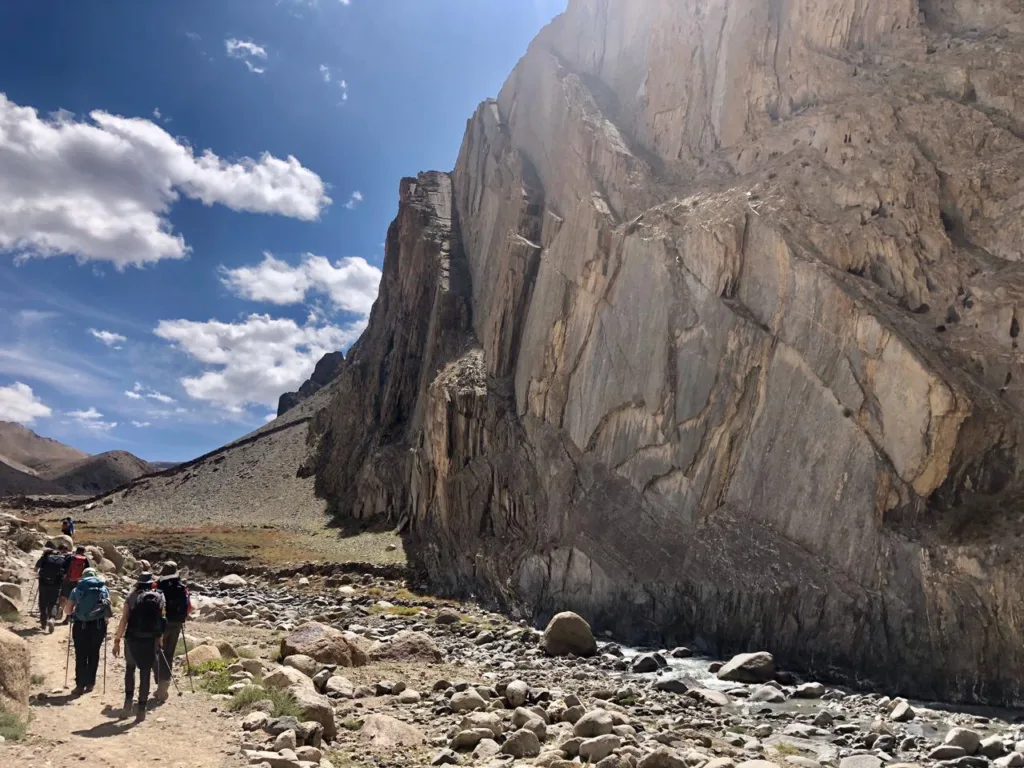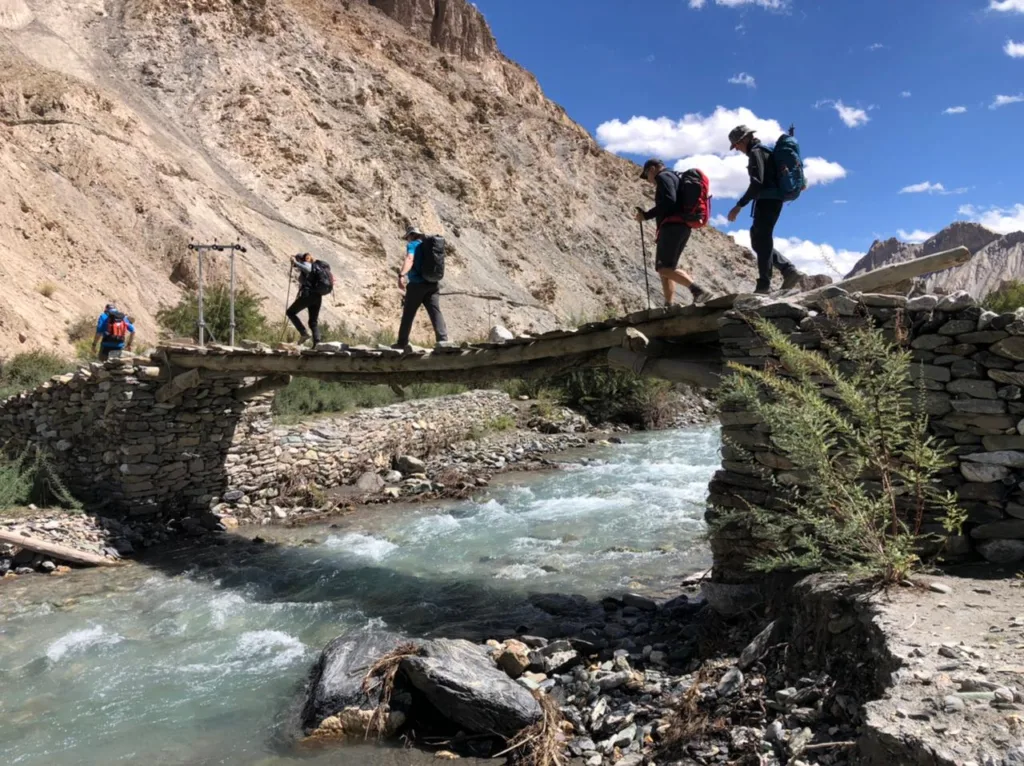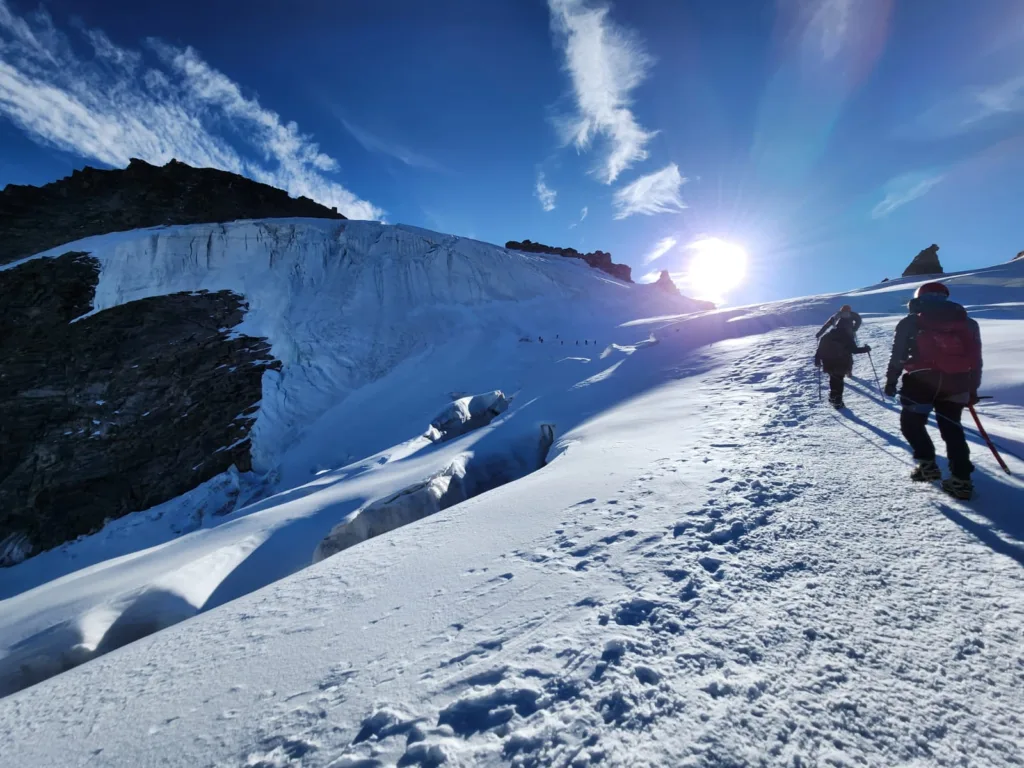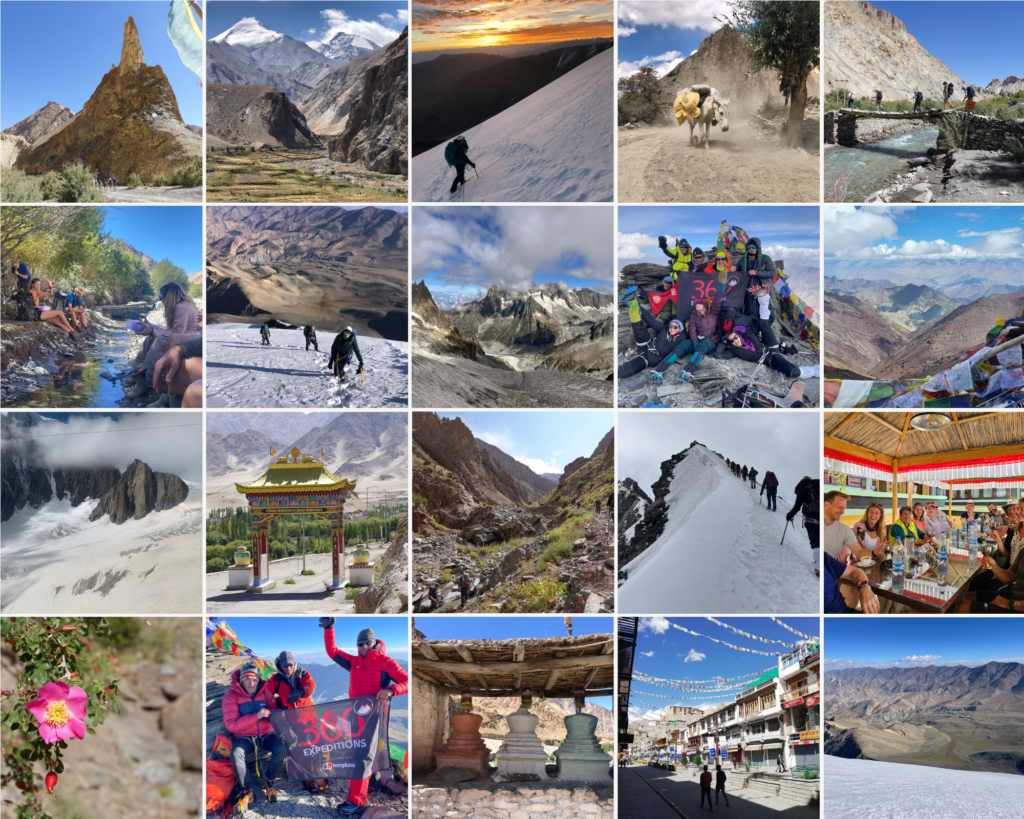Situated in the Ladakh region of northwestern India, in the awe-inspiring Markha Valley, Kang Yatse 2 is often spoken of as the ideal mountain for those looking to climb their first 6,000-metre peak or experience the Himalayas.
But what makes the mountain such a perfect candidate? And why should you consider Kang Yatse 2 if you want to take your trekking to the next level and enjoy an authentic Himalayan adventure?
In this article, we answer both of these questions and provide six excellent reasons to make Kang Yatse 2 your first 6,000-metre climb.
An expedition-style adventure
For many, Kang Yatse 2 is their first opportunity to participate in a real expedition-style climb. The altitude, environment and skills required ensure it’s a logical next step for those who have climbed Kilimanjaro or similar peaks and are hungry for more. It’s that much more challenging and the trek bears all the hallmarks of a “real” mountain expedition.

But, crucially, Kang Yatse 2 allows you to enjoy your first experience of expedition-style trekking in a relatively safe and more controlled environment. In other words, it’s the perfect introduction to the 6,000-metre club and often a gateway to other, more testing expeditions.
One of the best treks to base camp out there
Sometimes, we are all a little guilty of placing too much emphasis on the summit. In reality, the summit is just a tiny part of the overall experience and should be considered the culmination of your trek rather than the be-all and end-all. Yes, getting to the top is important for a lot of people. But it’s certainly not everything.
Mountain treks are often life-changing experiences. They are character-building, rewarding and intensely memorable. And they are all of these things whether you reach the summit or not. It’s not like you stand atop the mountain, a switch is flicked and suddenly you have access to all these feelings, memories and experiences. You accrue them over days, weeks and months. Beginning with the moment you take the first step on your way to base camp.
No mountain better illustrates this than Kang Yatse 2. The trek into and out of base camp are trip highlights. They are simply spectacular, encompassing breathtaking landscapes and remarkable people and places. It’s almost as if this expedition was expressly created to embody the “it’s not the destination, it’s the journey” maxim.
An unbeatable atmosphere
Because the Kang Yatse II trek is so sublime, it tends to attract a more diverse group of participants, some of whom are in it just for the approach and don’t want to attempt the summit. Instead, they will happily hang out at base camp, enjoying the scenery, soaking up the natural beauty and supporting those heading to the summit.

This accessibility means Kang Yatse 2 expeditions typically have some of the best vibes of any trek. Base camp has a real buzz about the place and a real sense of solidarity and togetherness. It doesn’t matter how many times we climb this mountain, the good times and communal spirit are always a pleasure to see.
A thrilling snow summit
Having spoken at length about how it’s all about the journey and suggested the Kang Yatse 2 approach is the trek highlight, we have a small admission to make. The summit is pretty cool, too. Actually, it’s very cool.
Again, it’s almost like it was designed purposely for those attempting their first 6,000-metre expedition-style mountain. It features enough technicality to make it exciting and challenging but not so much that you will feel out of your depth.
There will be snow. You will use crampons and ropes for safety. And you will have your ice axe at the ready. While you will predominantly use it as a walking axe, we teach you self-arresting techniques on-site, just in case. It’s the perfect way to learn and refine the essential mountain skills you will need if you move onto bigger, more technical peaks.
An achievable challenge
What we’re trying to say is that Kang Yatse 2 is an achievable challenge. A challenge that requires you to learn new skills and hone existing ones while helping build your confidence and give you experience of climbing to 6,000 metres. Developing high-mountain expertise is all about taking manageable steps, building competency and developing your understanding of the environment. It’s not about throwing yourself in at the deep end. Sink or swim doesn’t work in the mountains.
In terms of preparation, we have created a tailored Kang Yatse 2 training programme. We recommend you aim to be in Month Five by the time you head out to the Himalayas.

Your introduction to the Himalayas
Finally, Kang Yatse 2 is a joyous introduction to the beauty and cultural richness of the Himalayan region. With higher peaks, the summit can become this all-consuming focus that dwarves every other aspect of the expedition. The enormous challenge ahead almost overshadows the human and natural history, culture, people and wildlife. Not so with Kang Yatse 2.
On this expedition, you will discover ancient monasteries, semi-desert landscapes and a melting pot of Islamic, Buddhist, Indian and Tibetan cultures. You will experience one of the most unique and enchanting regions on earth. We think it is pretty inconceivable that anyone could leave the Kang Yatse 2 expedition without falling head over heels for the Himalayas.
Kang Yatse 2 with 360 Expeditions
At 360 Expeditions, we’ve been organising and leading Kang Yatse expeditions for many years. Our extensive experience enables us to deliver a fantastic expedition that is ideal for those looking to summit their first 6,000-metre peak or simply enjoy one of the most memorable base camp treks in the world. We are firm believers that Kang Yatse 2 is the ideal introduction to the Himalayas and would love to be responsible for helping you take the next step in your mountain journey.
Read Testimonials from our Kang Yatse Expeditions
To learn more about our expedition, see a full trip itinerary and find answers to frequently asked questions, check out the Kang Yatse 2 expedition page. If you have any enquiries, please don’t hesitate to reach out to our friendly 360 team, either.
